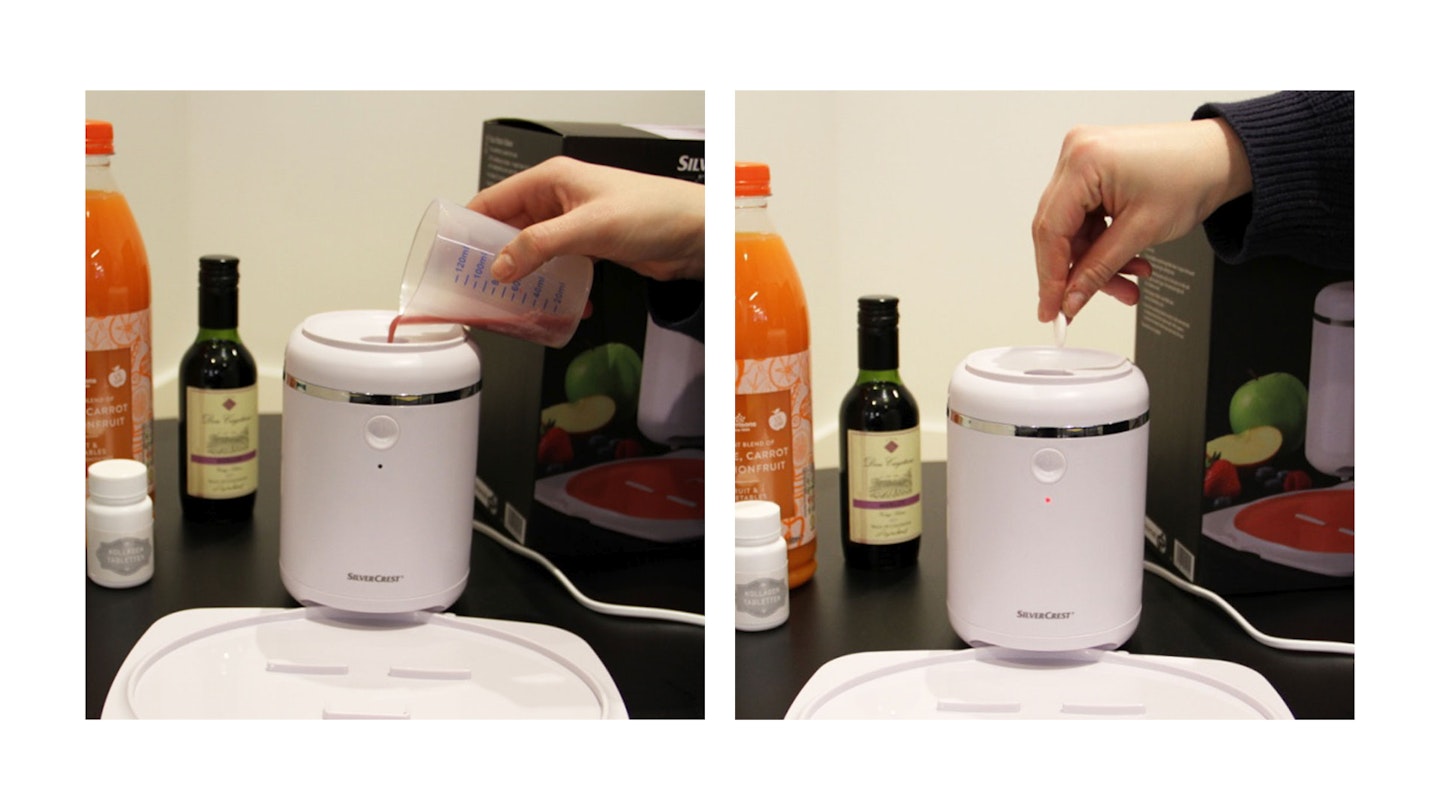Like all good beauty trends, the face mask’s routes can be traced back to South Korea. Since their stratospheric rise in popularity, they’ve taken on many forms - from bubble masks to dry sheets to snail mucin-infused and clay - all of which can be enjoyed from the comfort of your home.
But, have you ever paused and thought: What’s really in a sheet mask? The top notes are usually sung out on the packaging, but beyond that, the ingredient list requires a science degree to decipher. Enter: Lidl. For the first time, the German multi-store as entered the UK with an affordable machine that allows you to control exactly what goes into your sheet mask.
Priced at £34.99, it’s a nifty bit of kit that can spit out collagen-infused masks faster than your kettle can boil water. From the supermarket’s SilverCrest rage, it allows you to make hydrogel masks steeped in any ingredient of your choice. The handbook included in the box (along with the machine, sheet mask mould, a pack of 24 collagen pills and a small beaker) recommends recipes to suit your skin.
The contraption is far easier to use than its many pages of instructions would let on. Once you’ve plugged in the device and poured in 60 millilitres of distilled water (I used freshly boiled water that cooled down because A. I couldn’t find any distilled water and B. I’m a renegade). The machine beeps rather abruptly once it’s had its fill, at which you pour in your main ingredients. You can use smoothies, olive oil, wine or whatever you like. As per the manual I went for red wine, a splash of milk and carrot and orange juice (but, because I couldn’t find straight carrot and OJ at my local Morrisons I had to settle on adding passion fruit into the mix too).


As red wine is an antioxidant it can make the skin glow and protect the complexion from the effects of UV. I went for carrot juice because it’s a hit of Vitamin C that can reduce the look of fine lines and make your skin look plumper, while orange juice is known to reduce the look of spots and it’s natural alpha hydroxyl acid supposedly cleanses the pours. Since the lactic acid in milk is extremely hydrating and can soothing, I thought it would complement the other ingredients.
With the potion concocted I poured it into the machine and then added a collagen tablet. After six minutes of scrolling through Instagram, the contraption started frantically beeping. Suddenly a rush of liquid poured out and filled the mould. Within seconds the room suddenly filled with the heady aroma of warm red wine.
While I left it to set for the full six minutes recommended I cleansed my face. When I came back the consistency was not what I expected. It was gelatinous and slippery like I imagine a dolphin’s eyeball to be. Add in the heavy scent of mulled wine and you’re on track to understanding just how unpleasant it was.
A couple of minutes later and after it had had a chill in the fridge I came back to this face jelly. It was still mighty slippery but it was cooling and moisturizing. After spending several minutes trying to find the optimum angle to keep the mask from falling off my face (hint: head tilted back, like you’re in a barber’s chair) I could feel the collagen’s hydrating effects taking place.

Now, I admit, on reflection, my choice of ingredients were stronger in theory than in practice, the reality was I could sleep happy knowing I had naturally detoxed my skin.
This article originally appeared on The Debrief.
